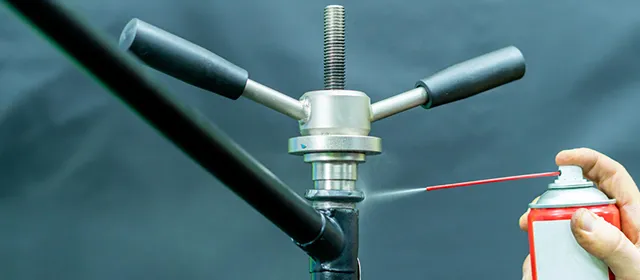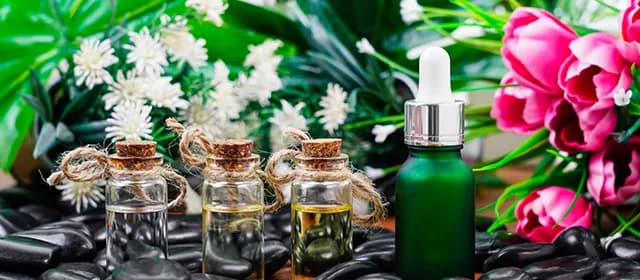Aerosol products rely on pressurized containers and valves to deliver their contents. These systems pose inherent risks due to potential over-pressurization, thermal exposure or mechanical failure. Regulators globally have established safety standards to govern aerosol valves, container strength and transport conditions. These regulations protect consumers, handlers and transportation systems from rupture, leakage and other pressure-related hazards.
Kings Research estimates that the global aerosol valves market is projected to grow from USD 1.06 billion in 2025 to USD 1.44 billion by 2032, exhibiting a CAGR of 4.53% over the forecast period. This blog examines key international regulatory regimes, underlying technical requirements, and their implications for manufacturers and users.
The European Framework: Aerosol Dispenser Directive (ADD)
The European Union defines aerosol dispensers under the Aerosol Dispensers Directive (ADD) 75/324/EEC, which addresses both pressure hazards and flammability. The directive applies to non-reusable containers made from metal, plastic or glass that contain gas under pressure. It requires member states to ensure that aerosol products comply with harmonized technical specifications before they can be marketed across the EU.
Important pressure requirements are laid out in the ADD. For metal containers filled at a pressure below 6.7 bar at 50°C, a hydraulic test pressure of at least 10 bar must be applied. If the internal pressure at 50°C is 6.7 bar or greater, the test pressure must be 50 percent higher than that internal pressure.
The directive also sets maximum allowable internal pressures at 50°C depending on the type of propellant gas: for flammable liquefied gas, the maximum is 12 bar; for non-flammable liquefied gas, 13.2 bar; and for non-flammable compressed or dissolved gas, 15 bar.
For glass aerosol containers, there are stricter design provisions. Plastic coating or permanent protection must prevent fragmentation in case of breakage. The capacity of such glass containers must not exceed 220 ml, and they must withstand test pressures of at least 12 bar (for compressed/dissolved gas) or 10 bar (for liquefied).
The ADD also addresses valve construction. It mandates that valves maintain near-hermetic sealing under normal storage, and that protective caps prevent accidental activation or deterioration. Labels on aerosol cans must clearly warn users to protect containers from high temperature and not to pierce or incinerate them, even when empty.
How Do Dangerous Goods Regulations Shape Aerosol Transport Safety?
Aerosols fall under transport regulation in many international frameworks, especially when they contain flammable or pressurized propellants. Under the UN Model Regulations, aerosols are typically classified as UN Number 1950, which triggers safety requirements for pressure tests, valve construction, and packaging.
The ADR (European Agreement concerning the International Carriage of Dangerous Goods by Road) includes detailed provisions governing release valves and test pressures. The ADR specifies that release devices must ensure leak-tight closure and protect against unintentional opening; valves that rely solely on internal pressure for closure are not permitted.
ADR also regulates internal pressure limits. It requires that the internal pressure at 50°C not exceed two-thirds of the test pressure or 13.2 bar, whichever is lower. Containers must also be filled so that at 50°C, the liquid phase does not exceed 95 percent of capacity. These measures reduce the risk of overfilling and thermal expansion leading to rupture.
What Are the ICAO Requirements for Transporting Aerosols by Air?
The International Civil Aviation Organization (ICAO) maintains standards for transporting aerosol dispensers by air, as part of its Dangerous Goods regulations. According to ICAO’s latest working paper, aerosol dispensers must not exceed internal pressures of 12 bar (1.2 MPa) at 50°C for flammable liquefied gas, 13.2 bar (1.32 MPa) for non-flammable liquefied gas, and 15 bar (1.5 MPa) for non-flammable compressed or dissolved gases (Source: www.icao.int).
The ICAO regulations also impose volume limits and structural tests. Metal receptacles may hold up to 1,000 ml, while plastic versions must fall below 500 ml. Each model of aerosol must endure a hydraulic pressure test to 1.5 times its internal pressure at 50°C, with a minimum of 10 bar if lower. Valves must be safeguarded during transport by protective caps or other means.
How Do DOT and OSHA Regulate Aerosol Pressure and Workplace Safety?
In the United States, aerosol containers are regulated in multiple ways. The U.S. Department of Transportation (DOT) mandates performance requirements for aerosol cans under its transport safety regulations. According to a DOT aerosol-safety report, the minimum burst pressure of a container must be 1.8 times the pressure at 50°C, while a minimum buckling (or deformation) pressure must be 1.5 times that same internal pressure.
Pressure hazards in aerosols are also recognized by the Occupational Safety and Health Administration (OSHA). Under the Hazard Communication Standard, OSHA notes that aerosol cans pose explosion risks if overheated, since they frequently lack pressure relief devices.
The updated Hazard Communication Standard clarifies that aerosols may not fall under some flammable gas or liquid categories even if they contain flammable components, depending on their formulation. These U.S. regulatory frameworks focus both on transport safety and worker protection, ensuring pressure safety and information transparency for end-users and handlers.
Pressure Equipment Directive (PED) – Broader EU Pressure Regulation
Beyond the ADD, the Pressure Equipment Directive (PED) 2014/68/EU governs the design, manufacture and conformity assessment of pressure equipment in the EU. Aerosol containers can fall under the scope of PED when their volume or pressure capacity meets certain thresholds.
PED requires manufacturers to apply risk-based assessment, confirm material suitability, and perform pressure testing under prescribed conformity modules. This ensures the mechanical integrity of pressure vessels and related parts, including valves. Compliance with PED supports safe design practices for advanced or high-pressure aerosol systems beyond traditional consumer products.
International Efforts to Align Aerosol Pressure and Valve Standards
Industry stakeholders and regulatory bodies engage in ongoing efforts to harmonize aerosol safety standards. The UNECE SCETDG (United Nations Economic Commission for Europe, Sub-Committee of Experts on the Transport of Dangerous Goods) has examined revisions to the ADD. A technical proposal recommends aligning maximum allowed internal pressure at 50°C for non-flammable propellants to 15 bar, rather than the previous 13.2 bar (Source: unece.org).
That proposal would align aerosol containers with pressure capacities accepted in some national systems and industry practices. Tests submitted as part of that working document demonstrated that containers could withstand 15 bar at 50°C without visible leakage or deformation. Industry advocates argue that such updates could improve performance or allow new propellant systems, while maintaining safety margins.
Technical Implications for Valve Design and Container Integrity
Regulatory pressure limits and testing requirements drive technical design decisions for aerosol valves and containers. Valves must maintain sealing integrity over the expected storage temperature range and pressure load. Under ADD, valve construction must resist unintentional openings or degradation during storage.
Hydraulic pressure tests impose requirements on container metallurgy, wall thickness, and valve-to-body sealing. Manufacturers must design valves that survive static and dynamic loads, including temperature cycling and internal pressurization. The requirement for over-testing (test pressure often 1.5× the nominal internal pressure) ensures a safety margin against burst or fatigue.
Transport regulations such as ADR require that valves close securely and cannot rely purely on spring-loaded closure. The leak-tight requirement reduces the risk of accidental discharge or leakage under stress. For aviation transport, valve caps are mandatory to protect against accidental actuation, even when internal pressure is within limits.
Key Safety and Compliance Issues for Aerosol Manufacturers
Meeting international standards poses challenges for manufacturers. Conforming to both the ADD and ADR may require different test pressures, valve designs or container capacities. These differences raise engineering and production costs. Exporters must navigate divergent market requirements in Europe, the U.S. and aviation regulation, increasing complexity.
High-pressure designs, such as those targeting 15 bar internal pressure, demand more robust materials and valve assemblies. Testing protocols, such as burst and hydraulic pressure testing, add manufacturing time and cost. Regulatory updates or proposals, such as UNECE’s 15 bar recommendation require significant revalidation of existing product lines.
Operating temperatures and propellant chemistry significantly influence design. Flammable propellants require stricter pressure limits; non-flammable gases permit higher pressures but raise different safety concerns. Manufacturers must balance performance against safety, regulatory compliance and transportation constraints.
Another challenge is regulatory harmonization. Some jurisdictions require updated certification or retesting when standards evolve. Valve suppliers must also maintain traceability, quality control and documentation to satisfy different conformity assessment procedures, such as those under the PED or ADR.
Strategic Implications for Manufacturers and Regulators
Regulatory pressure alignment across regions could lower costs and increase innovation. Manufacturers may benefit if international bodies adopt consistent standards for maximum internal pressure, test protocols and valve specifications. Harmonization would also simplify global supply chains and allow higher-pressure aerosol offerings more broadly.
Regulators must balance performance and safety. Higher allowable pressures may enable innovative propellant formulations or stronger delivery, but risk margins must remain well understood. Collaborative efforts among regulatory agencies, industry consortia and standardization bodies can help assess new risk models and validate new container designs.
Innovation in valve technology is also critical. Advanced materials, seal systems and safety caps can improve performance while meeting or exceeding existing standards. Manufacturers are encouraged to invest in research and development, particularly in new propellant systems, pressure-resistant containers and smart pressure-relief mechanisms.
Quality assurance remains a central concern. Firms should adopt rigorous testing protocols, maintain production traceability, and ensure ongoing conformity assessment. Regulators might encourage industry self-regulation or third-party testing to raise safety norms and foster trust in high-pressure products.
Future Outlook
Regulatory trends suggest a gradual shift toward higher allowable pressures and more performance-oriented aerosol systems. UNECE proposals indicate industry willingness to adopt 15 bar designs for non-flammable propellants, assuming appropriate testing and container validation. That could support new product development and enable more efficient aerosol delivery technologies.
Transport regulations will continue to influence design. The ADR and ICAO standards ensure that valves and containers remain compatible with logistics frameworks globally. As aerosol usage expands in novel applications such as industrial spray systems, personal care, automotive aerosols or pharmaceuticals regulators may revisit capacity, pressure and valve-safety requirements.
Pressure equipment standards such as the PED remain relevant for advanced aerosol systems, especially those that approach or exceed typical consumer thresholds. Manufacturers may begin to design aerosol containers to pressure vessel standards, blending conventional aerosol valve design with pressure vessel engineering.
Regulatory harmonization remains a long-term goal. Progress within UNECE forums and alignment among national regulators could yield more consistent global standards. That, in turn, can reduce costs, simplify cross-border trade and maintain high safety levels.
Conclusion
Aerosol valve safety and container integrity are governed by a complex web of international regulatory standards. The European Aerosol Dispensers Directive mandates rigorous test pressures, internal pressure limits and valve sealing. Transportation regulations under the ADR require leak-proof valves and protective caps, while aviation rules from ICAO set precise pressure thresholds and capacity limits. U.S. regulation through DOT and OSHA adds additional safety and transport controls.
Manufacturers face significant technical demands to comply with these diverse frameworks. Innovations in valve design, material strength and testing protocols will be critical to meeting evolving regulatory expectations. Harmonization across regions may streamline safety, drive performance and lower cost. Ultimately, maintaining robust regulatory control over aerosol pressure and valve function is essential to protect consumers, workers and transport systems ensuring that these common products remain safe throughout their lifecycle.




